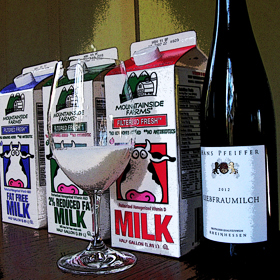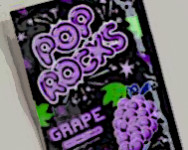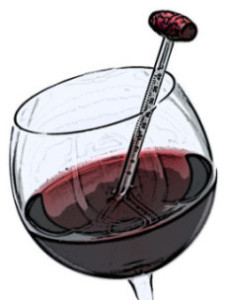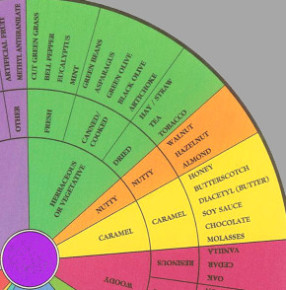Swirl It, Shake It, or Just Let It Be
Chapter Three. Part Nine.
Swirling wine around a wine glass introduces oxygen into the liquid which expedites the release of aromas and takes some of the tension out of firm, young reds. Better wine decanters are designed with maximum surface exposure to facilitate the same thing and some even gently oscillate to further speed the oxidation process. Romancing your wine in this way will make it more approachable but let’s face it, sometimes you want instant gratification and you just don’t have time for all that foreplay.
The Wine Aroma Wheel Goes Round & Round.
Chapter Three, Part Eight.
I‘m writing this blog under protest. I’m protesting the intolerable conditions in this frigid basement office where my breath fogs the screen and I have to sip whiskey to keep my spleen from developing potholes. Luckily this is in keeping with my new diet. I’m on the bourbon diet and I’ve already lost 300,000 brain cells.
It was 12 degrees this morning but at least the Weather Channel reports it’s going to cool down soon. My friend visited from Arizona and when he complained about the cold I said, “Hey, this isn’t so bad. It’s a dry cold.”
The household has finally adjusted to the arctic temperatures. My son has actually pulled his pants up and my wife happily fuels the fireplace with my old articles.
Read MoreQuality Hangs In The Balance.
Chapter Three. Part Three.
 To enjoy a great symphony or painting you needn’t analyze each note or brushstroke; you should embrace the emotional impact of the whole piece. It’s up to the snobby enthusiasts, historians and critics to pick apart the elements behind the artwork and ruin it for the rest of us. Hey, somebody’s gotta do it.
To enjoy a great symphony or painting you needn’t analyze each note or brushstroke; you should embrace the emotional impact of the whole piece. It’s up to the snobby enthusiasts, historians and critics to pick apart the elements behind the artwork and ruin it for the rest of us. Hey, somebody’s gotta do it.
Wine is much like music and art in that it is best appreciated when approached holistically. Unless of course, you’re one of those wine aficionados that spends all day in wine chat rooms when you’re supposed to be watching the kids. In that case you’re going to pay close attention to the individual elements inherent in wine so that, much like a music or art critic, you can bore your friends into a catatonic stupor with your insightful analysis. Thank God I’m here to help.
Let’s face it. When it comes to wine you’d probably like to be more like me – except that you’d want to bathe more often and
Read MoreWine Tasting Techniques; Weight A Minute.
Chapter Three. Part Twelve.
 Analyzing wine means much more than simply identifying aromas and flavors; you must also learn to identify tactile sensations. This will help you learn what textural profile appeals to you so you can express your likes or dislikes to a salesperson when you’re shopping for wine. Take full-bodied wine for example. You might love it. Your spouse hates it. Your goldfish doesn’t care one way or the other. And what about wines that are crisp or creamy, hard or soft, regular or decaf?
Analyzing wine means much more than simply identifying aromas and flavors; you must also learn to identify tactile sensations. This will help you learn what textural profile appeals to you so you can express your likes or dislikes to a salesperson when you’re shopping for wine. Take full-bodied wine for example. You might love it. Your spouse hates it. Your goldfish doesn’t care one way or the other. And what about wines that are crisp or creamy, hard or soft, regular or decaf?
Wine offers an abundance of textures but the tactile sensation we’re discussing today is weight …
Okay, that’s long enough.
Read MoreWine Tasting Techniques; How To Taste Better.
Chapter Three. Part Eleven.

Do you remember Pop Rocks – the 1970’s candy made of carbonated sugar granules tinted with some sort of unearthly dye and coated in polyethylene? When eaten, the outer plastic sealant dissolved and a radioactive uranium isotope was released, creating a tiny nuclear reaction in your mouth. But it was a happy nuclear reaction, filled with cheerful little explosions of flavor – just like grandma used to make.
Okay, so maybe it wasn’t polyethylene or a nuclear reaction, but that’s what it felt like. You may find this hard to believe but I try to be completely honest in my writing. I also try to be 175 pounds and that’s not working out so well either.
It’s A Matter Of Degrees.
Chapter Three, Part Ten.
 Proper wine tasting technique starts with serving wine at the right temperature. Don’t get me wrong. I’m not one of those extremists who bring a wine thermometer to a restaurant and obsess over a few degrees. I’d much rather obsess over something important like who’s picking up the check.
Proper wine tasting technique starts with serving wine at the right temperature. Don’t get me wrong. I’m not one of those extremists who bring a wine thermometer to a restaurant and obsess over a few degrees. I’d much rather obsess over something important like who’s picking up the check.
When wine is served too cold it will exhibit less flavor than one served at room temperature. This is good if the flavors are bad, but it’s bad if the flavors are good. What I’m saying is, cold masks both the quality and the flaws in wine. Studies have shown that people who drink wine too cold become bored and their lives soon lose meaning, usually resulting in heroin abuse or worse, a subscription to People Magazine.
Read More




















